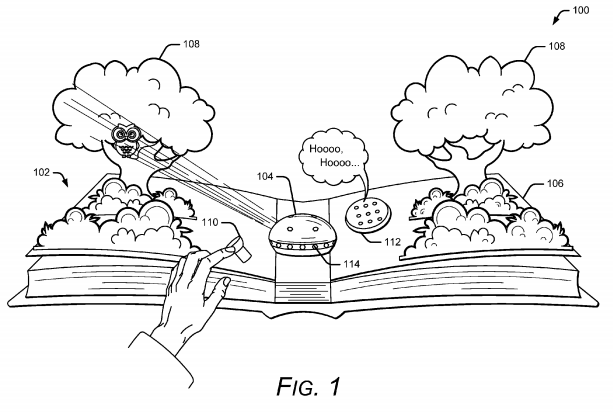March 6, 2016 weblog
Google envisions delivery of AR elements to physical books

The mind at its laziest sees the old—books in print—and the new—the digital universe—as opposites, in an either-or historic transition from one to the other. Goodbye, brick and mortar book shops, hello, Kindle. Reading words on paper with binding, so yesterday. Reading the same words off a screen, so now.
One publishing industry response is that everyone benefits if there is a merging of digital and print for learning as well as entertainment.
Publishing Perspectives, a trade journal for the book publishing industry, reported that consultant Bruce Harris voiced enthusiasm for the role of augmented reality (AR) in publishing, saying there was potential in "a true amalgamation of digital and print."
Not just physical print forms but even digital forms could benefit from AR. Harris said, "In some ways, digital has been "a frozen print experience," in that the reader is often looking at the same thing in both print and digital versions."
Once you add AR, you are experiencing movement, extra sound, "a lot of extra qualities" with the content.
Reading behavior in the AR vein might involve people using their phones or tablet apps to scan their physical page and see extra elements pop up. You are not throwing your printed book into the dustbin to read the same online. Instead, "You use your device to discover more content. The content is digitally appealing and has stuff you can manipulate, but you need the actual book in order to do it."
Google appears to have sniffed the potential of leveraging AR for the best reading experience; news of their patents shows that Google is interested in bringing augmented reality technology to physical books.
Android Headlines on Friday carried the story about the Google patents; John Anon, Android Headlines managing editor, discussed the patents.
A "Media Enhanced Pop-up Book" will make use of a smartphone or tablet in the reading process by interacting with the book. As the reader turns a page, the mobile device picks up on it and responds, delivering added content.
More on Google's ideas: An interactive book is discussed, a "Story Telling Device," with motion and pressure sensors embedded in the pages. No special glasses are needed.
You do not need an additional mobile device for this one to work. Instead, said Android Headlines, the book employs a small device that looks like a hamburger. The device is placed in the middle of the book; the embedded sensors on pages allow for the reader interactions. "The hamburger will essentially be able to interact with the reader's pressure or motion and change the imagery displayed on the pages," Anon said.The device is placed in the middle of the book and then embedded sensors on the pages allow for a more interactive reading experience.
The concept may trigger, as you read thhis, an imagined scene of a bedtime reading session with a young child, who is hanging off the bed in delighted anticipation of what, why and who are taking over this child's world with movement, sound along with the narrative.
Patently Apple would say: exactly. "It's clear that Google is eyeing the children's book market of tomorrow that will deliver a next generation interactive experience. While children books today include pop-up pages, the next generation pop-ups will be more interactive by including video projection, lighting projection, audio enhancements and even hints of using voice input to enhance the interaction of specific parts of the book."
© 2016 Tech Xplore




















